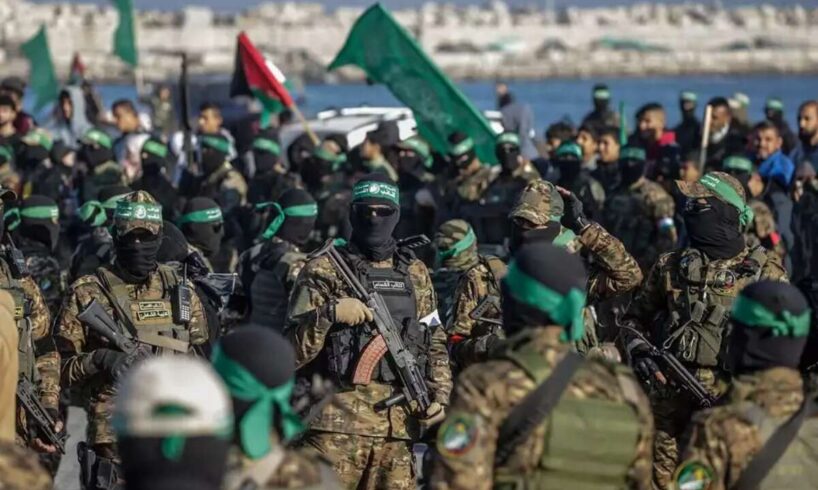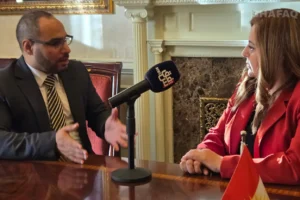
Hamas believes it has found a pressure point in Israeli society and is working to exploit it to squeeze as many concessions as possible in negotiations for a ceasefire. This is yet another in a long line of gambles that could come at great cost to the terrorist organization, particularly given the gap between Israeli public opinion and media discourse. Still, it appears that Hamas’ misreading of the situation is once again driving its strategy.
Inside Hamas’ leadership circle, there’s keen attention to calls for a complete halt to the war before a decisive outcome is reached, including misleading polls, punditry, and political statements. But more than this climate of gloom, the terrorist organization is also taking cues from political instability in Israel, notably the refusal of ultra-Orthodox politicians to compromise on the military draft. The key question preoccupying Hamas’ top brass appears to be: Why rush to a deal for the hostages’ release when Israel seems “exhausted” and might offer a ceasefire for free?
That calculation has led Hamas to adopt a strategy of dragging out talks while refusing to budge on demands that would allow it to rebuild its military capacity. As part of this approach, the organization has signaled in propaganda videos its intent to escalate attacks on Israeli troops and to attempt further kidnappings. From Hamas’ perspective, the more casualties Israel suffers, or even fears suffering, the more momentum will grow inside Israel for a ceasefire at any cost. This is what Hamas refers to as a “war of attrition.”
IDF forces in the Gaza Strip. Photo: IDF Spokesperson’s Unit
Hamas also plans to sow demoralization by releasing information about how it allegedly misled Israeli security services before the October 7 massacre. Recently, Abu Obeida, the alias used by military wing spokesperson Hudayfa Samir Abdallah al-Kahlout, threatened to release additional documents “at the right time” to show how the terrorist organization deceived Israeli intelligence for years. Undermining public trust in the security establishment remains one of Hamas’ central goals.
In parallel, Hamas is mounting a campaign to generate international pressure over Gaza’s dire humanitarian crisis, including widespread hunger and a death toll it claims stands at around 60,000 Palestinians. Its spokesmen have accused the Arab world of indifference and called on people to take to the streets in cities like Ramallah and Amman to push their governments into action. On Sunday, Gaza-based terrorist factions called on “all Palestinians everywhere, the Arab and Islamic nations, and freedom lovers worldwide” to intensify public, diplomatic and media efforts to achieve an unconditional ceasefire.
Exploiting the devastation
In other words, Hamas is still trying to exploit the destruction it brought on Gaza with its own hands to ensure its survival, and reset the clock until the next war. The fire could be put out instantly, all the hostages freed, and the few surviving Hamas leaders allowed to leave Gaza. In short, surrender. But Hamas and its allies are unwilling to do this to end the suffering of Gaza’s civilians.
Much of this strategy is believed to be directed by Izz al-Din al-Haddad, one of the few senior Hamas commanders still in Gaza and now head of its military wing following the assassinations of his predecessors. Although he has lost many key field commanders in recent months, thousands of operatives are still reportedly under his command. He is supported by Raed Saad and Muhammad Awawdeh, who head Hamas’ production and intelligence divisions.
Acting head of Hamas’ military wing, Izz al-Din al-Haddad
Al-Haddad speaks Hebrew and is directly attuned to Israeli public discourse. Like Yahya Sinwar, the Hamas leader killed earlier this year, al-Haddad reportedly factors Israeli sentiment into his strategic assessments. The IDF recently revealed that he has changed his appearance to avoid detection, dyeing his hair black, trimming his beard and wearing civilian clothes, a move interpreted as a sign that his days may be numbered.
On the diplomatic front, negotiations are largely overseen by Hamas’ leadership council members based in Qatar. Early in the war, Khaled Mashaal angered Arab governments by meddling in their internal affairs and calling for mass protests, a pattern he now appears to have resumed. Meanwhile, Zahar Jabarin, who oversees terrorist activity in Judea and Samaria, has reportedly ordered an increase in attempted attacks in the area in recent months. Other council members – Muhammad Darwish, Khalil al-Hayya and Nizar Awadallah – are leading the negotiations through international mediators.
Importantly, Hamas’ strategy doesn’t mean Israel should “flip the table” and refuse any deal for the hostages. But officials must be mindful of how their words influence Hamas’ calculus. Above all, politicians must cut through the fog and make clear to the enemy: an Israeli election or a change of government will not, by itself, bring about a ceasefire in Gaza – only the release of the hostages will.





